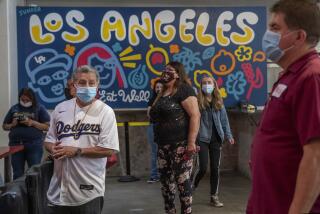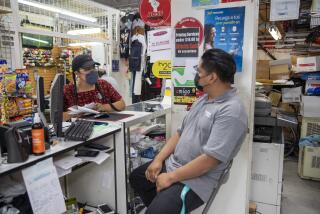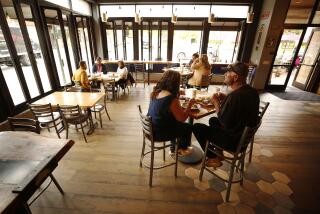Here’s how California’s new coronavirus reopening rules will affect you

California is shifting to a new approach to reopening the economy in the COVID-19 era, hoping to avoid a repeat of the case surge that came with the summer reopening.
Under the new plan, counties must show consistent success in stemming coronavirus transmission before allowing businesses greater flexibility to reopen.
The goal is to have a more uniform approach that prevents new outbreaks that put pressure on hospitals and force a rollback of the reopening.
Here are some details:
What are the changes?
Counties will be allowed to ease restrictions in stages, slowly granting Californians their pre-outbreak freedoms. Unlike last time, the governor said the decision to grant counties the ability to open businesses will be based entirely on data showing the virus’ spread.
In the rollout of the new plan, Newsom’s office described these changes:
- Generally each county will remain in a tier for at least 21 days before it can expand allowable activities and move to a less restrictive tier. Some counties in the first tier may be eligible to move to the next sooner. For higher tiers, the 21-day clock begins Friday.
- California will update each county’s data for the previous week and make corresponding changes to tiers each Tuesday. In order to move into a less restrictive tier at the end of the 21-day period, a county must have met its tier’s criteria for two consecutive weeks.
There is no longer a county attestation process. Instead the new system will look at case rates and test positivity to measure how widespread the coronavirus is in each county and guide what is allowed.
- A new process for tightening back up when conditions worsen: Counties that fail to meet the metrics for their current tier for two consecutive weeks must move backward and adopt more restrictions.
What are the tiers?
- Tier 1, widespread transmission: Most nonessential businesses must be closed. Counties in this tier have more than seven new coronavirus cases per 100,000 people per day and a test positivity rate of 8% and above.
- Tier 2, substantial transmission: Some nonessential indoor businesses remain closed. Counties in this tier have four to seven cases per 100,000 people per day and a test positivity rate of 5% to 8%.
- Tier 3, moderate transmission: Some businesses can open with modifications. Counties in this tier have 1-3.9 new cases per 100,000 people per day and a positivity rate of 2% to 4.9%.
- Tier 4, minimal transmission: Most businesses can reopen, with modifications. Counties in this tier have less than one new case per 100,000 people per day and a positivity rate of less than 2%.
The criteria for each tier will be uniform for all 58 counties in California, and the vast majority of counties — including all Southern California counties except San Diego — will begin in the first tier.
What are the details?
Here are some explanations from a state document that describes the new procedures:
— Your county will fall into one of four colored tiers — purple, red, orange, and yellow — based on the infection rate and the extent of community spread. That color will indicate how sectors can operate.
For example, in the Widespread (purple) tier, restaurants can operate only outdoors. But once a county has achieved a lower level of disease transmission and moved into the Substantial (red) tier, restaurants can operate with 25% capacity indoors.
For more information on what’s open in your county, visit: https://covid19.ca.gov/safer-economy/
— How do we measure the infection rate and extent of community spread? Two simple metrics: number of cases per 100,000 residents and percentage of tests that come back positive.
— Schools may reopen for in-person instruction once their county has been in the Substantial (red) tier for at least two weeks. The epidemiological criteria for this change are consistent with the previous County Monitoring List framework. School districts in the Widespread (purple) tier can still receive a waiver from their local health department for TK-6 grades.
Source: California Department of Public Health and Gov. Gavin Newsom’s Office
Times staff writers Phil Willon, Colleen Shalby and Taryn Luna contributed to this report.
More to Read
Start your day right
Sign up for Essential California for news, features and recommendations from the L.A. Times and beyond in your inbox six days a week.
You may occasionally receive promotional content from the Los Angeles Times.






